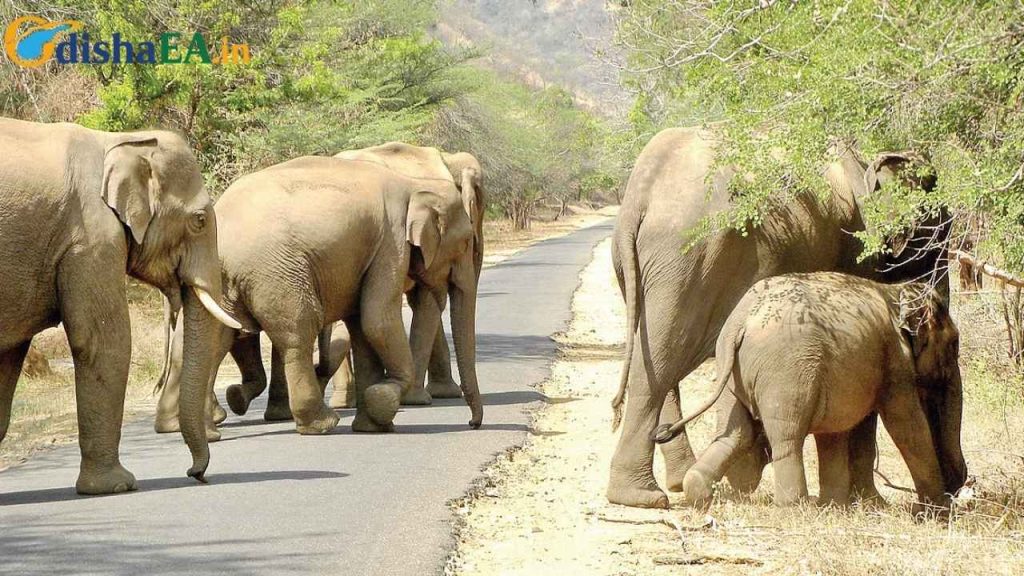Elephants, often called the “gentle giants,” are crucial to the ecosystem, not only for their impressive size but for the vital roles they play in maintaining the health of forests and grasslands. In India, the state of Odisha is home to a significant population of wild elephants. However, human-elephant conflict is on the rise, and habitat degradation threatens these majestic creatures. In response, the Odisha government has launched a new initiative that promises to improve elephant habitat management and create a more harmonious relationship between elephants and local communities.
This initiative, which involves classifying forest beats based on their habitat quality, aims to tackle the challenges faced by elephants in Odisha. The new classification system will identify areas that are ideal for elephant habitation and highlight zones that need restoration. This strategy forms a critical part of the Comprehensive Action Plan (CAP) established by Odisha’s wildlife authorities in 2022, which aims to improve conservation efforts and reduce human-wildlife conflicts.

In this article, we will dive deep into the context, significance, and practical applications of this forest beat classification initiative, providing clear insights on what it means for elephant conservation and the people of Odisha.
Managing Odisha’s Elephant Habitats
| Key Topic | Details |
|---|---|
| Initiative Name | Forest Beat Classification for Elephant Habitat |
| Goal | To improve elephant habitat management, minimize human-elephant conflicts, and restore degraded forest areas |
| Target | Wild elephant populations in Odisha |
| Key Parameters for Classification | Forage availability, water sources, canopy cover, and human disturbance |
| Actions for Degraded Areas | Restoration activities like weed eradication, bamboo reforestation, and establishment of fruit-bearing plantations |
| New Wildlife Center | A “Centre for Species Survival: Asian Elephant” near Bhubaneswar for research and policy development |
| Source | Indian Masterminds, New Indian Express, Odisha Government |
| Official Website | Odisha Forest Development Corporation |
Odisha’s new initiative to classify forest beats for elephant conservation is a significant step towards improving the management of these magnificent creatures’ habitats. By categorizing the forests, implementing targeted restoration efforts, and establishing the Centre for Species Survival: Asian Elephant, the state is taking proactive steps to reduce human-elephant conflict and ensure elephants have the resources they need to thrive.
This initiative is a model for other regions facing similar challenges and demonstrates how targeted, thoughtful conservation strategies can benefit both wildlife and human communities. With continued effort and community involvement, Odisha’s elephants are on a path to a more secure and sustainable future.
Why Elephants Matter
Elephants are vital to the environment for several reasons. As herbivores, they help maintain the balance of plant life by consuming large quantities of vegetation. Their movements also shape the landscape: they break down trees, which helps new plants grow, and their dung fertilizes the soil. Additionally, elephants create pathways that other wildlife can use to navigate the forests. Without these giants, ecosystems would struggle to maintain their delicate balance.
Unfortunately, elephant populations in Odisha have been facing mounting challenges. The increasing encroachment of human settlements into elephant habitats has led to more conflicts, including damage to crops and occasional fatalities on both sides. In response, Odisha has been taking proactive measures to ensure elephants have secure, well-managed habitats while reducing the risks for local communities.
The Forest Beat Classification Initiative
The Forest Beat Classification initiative is a forward-thinking move by Odisha’s wildlife authorities. It’s designed to assess the quality of elephant habitats and divide the forests into distinct categories: good, medium, and poor. This system will allow conservationists to target efforts where they are most needed.
Step 1: Classification Criteria
Key parameters such as forage availability, water sources, canopy cover, and levels of human disturbance will be used to determine the classification of each forest beat. For example:
- Good: These areas have rich vegetation, ample water sources, and minimal human disturbances. They are already optimal habitats for elephants.
- Medium: These areas are somewhat suitable but may need improvement in terms of forage or water availability.
- Poor: These areas face significant challenges, such as habitat degradation, human encroachment, or loss of resources.
Step 2: Tailored Conservation Strategies
Once the classification is complete, specific conservation interventions will be tailored to each zone. For instance:
- Good: The focus will be on protection and monitoring to prevent human-elephant conflicts and maintain habitat integrity.
- Medium: These areas will benefit from restoration efforts such as planting fruit-bearing trees or installing artificial water sources.
- Poor: Restoration activities will include weed eradication, bamboo reforestation, and the planting of fodder plantations to improve food availability for elephants.
Addressing Human-Elephant Conflicts
Human-elephant conflict is one of the most pressing issues in elephant conservation today. In Odisha, this has led to both human fatalities and crop damage. As the elephant population grows, they move into agricultural areas, leading to clashes with farmers. The Odisha government aims to reduce these conflicts through better habitat management.
By classifying the forest beats and implementing a targeted conservation approach, the state hopes to restore habitat quality and reduce disturbances. In areas where elephants are encroaching on human settlements, corridors or buffer zones will be developed to ensure that elephants can move freely without causing harm to crops or coming into direct contact with people.
The Centre for Species Survival: Asian Elephant
In addition to the forest beat classification, Odisha is also developing the Centre for Species Survival: Asian Elephant, the world’s first center dedicated to the survival of the Asian elephant. This facility, set to be located near the Chandaka Wildlife Division in Bhubaneswar, will serve as a research hub for elephant conservation, bringing together experts, scientists, and conservationists to share knowledge and develop best practices.
The center, a joint initiative by Odisha’s forest department, the International Union for Conservation of Nature (IUCN), the Wildlife Trust of India (WTI), and the Columbus Zoo and Aquarium, will focus on policy development, research, and education about elephant conservation. This center will not only help improve the quality of life for elephants in Odisha but will also provide a model for other regions struggling with similar issues.
Practical Steps for Elephants’ Conservation
The efforts to manage Odisha’s elephant habitats are part of a broader strategy aimed at ensuring long-term sustainability for both elephants and the local communities living near these habitats. Here are some practical steps being taken to conserve elephants and their habitats:
- Monitoring Elephant Movements: The Odisha government is investing in technology to monitor elephant movements, including GPS tracking. This allows authorities to track where elephants are and respond quickly if they are heading into human-populated areas.
- Creating Wildlife Corridors: By creating safe passages for elephants to move between forest areas, these corridors help reduce the chances of conflict with humans. The establishment of wildlife corridors is a crucial strategy to ensure elephants have safe routes to migrate.
- Community Engagement: Educating local communities about how to peacefully coexist with elephants is key. The government is working to raise awareness about the importance of elephants to the environment and the steps people can take to avoid conflicts, such as securing crops at night.
- Promoting Eco-friendly Practices: Local farmers and communities are being encouraged to adopt eco-friendly practices like organic farming and elephant-friendly crops to reduce the attraction of their lands to elephants.
Elephant Care in Odisha Gets a Boost with the Introduction of ‘Airawat’ Truck
CM Majhi Advocates for Unified Action at Odisha’s Human-Elephant Workshop
Wild Elephants Roam Sundargarh Villages, Causing Panic and Crop Damage
FAQs
1. Why are elephants important to ecosystems?
Elephants are considered “keystone species” because they help shape the environment by creating pathways in the forest, dispersing seeds, and maintaining the structure of the ecosystem.
2. How can local farmers help with elephant conservation?
Farmers can help by creating barriers to protect their crops, using non-toxic repellents, and participating in community awareness programs on peaceful coexistence.
3. How will the forest beat classification help elephants?
By categorizing forest areas into good, medium, and poor habitats, Odisha can tailor conservation efforts, ensuring elephants have the best possible environments to thrive.
4. What can tourists do to support elephant conservation?
Tourists can contribute by visiting sanctuaries like Chandaka and participating in eco-tourism activities, which provide funds for conservation efforts.






